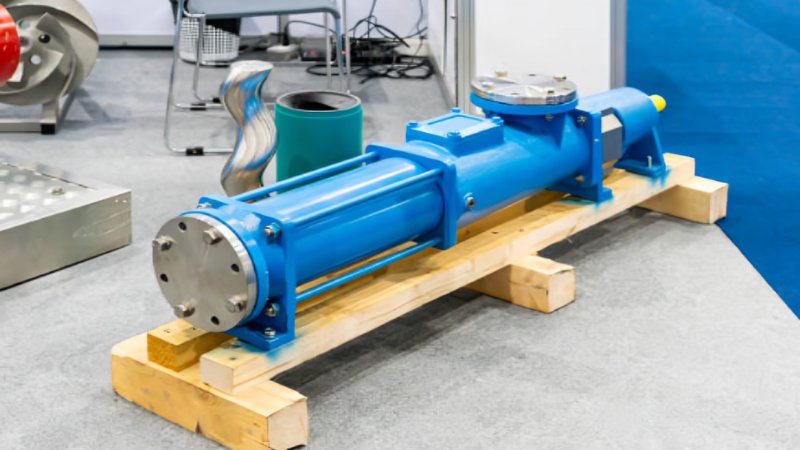Positive displacement pumps have established themselves as a cornerstone in modern industrial operations, distinguishing themselves for their unmatched ability to transfer a wide range of fluids with accuracy and reliability.
Whether tasked with transporting delicate pharmaceutical ingredients or heavy crude oil, their operational precision is invaluable. For facilities requiring dependable equipment, exploring proven solutions such as Roper Pumps can be a strategic move to optimize production and maintain process integrity.
Positive displacement pumps are popular due to their consistent flow, which ensures industry compliance with regulations, maintains product quality, and promotes waste reduction. They can self-prime and adapt to various environments, making them ideal for food and beverage sectors and oil fields.
These pumps also contribute to sustainability through energy-efficient designs, making them an intelligent choice for industries seeking environmental and economic benefits.
Consistent Flow Rates
Delivering a uniform flow rate remains one of the defining qualities of positive displacement pumps. Because their mechanism moves a fixed amount of fluid with each cycle, regardless of downstream pressure changes, these pumps excel in processes that demand precise fluid measurement.
This feature is indispensable for chemical dosing, pharmaceutical compounding, and any application where minor deviations in volume can impact product efficacy or safety.
Handling High-Viscosity Fluids
Positive displacement pumps work even when they have to move slurries or other high-viscosity materials, which is not the case with many other types of pumps. Their robust internal configuration enables the efficient movement of substances ranging from thick oils and syrups to sludges and pastes, eliminating the need for additional dilution or complicated handling protocols.
This not only simplifies operations but also reduces the risk of equipment failure due to jamming or excess wear—problems that are common in centrifugal systems dealing with viscous materials.
Self-Priming Capability
Self-priming is a valuable feature unique to many positive displacement pump models. These pumps can evacuate air from their suction line and commence operation without manual priming or auxiliary systems. In practice, this characteristic reduces the risks of dry running and enables more flexible installation—both of which are critical for operations in remote or fluctuating field conditions.
Facilities working with start-stop process cycles, intermittent flows, or changing environmental factors will find this capability especially advantageous.
Versatility Across Industries
The design of positive displacement pumps enables adaptation across a multitude of industries. Their ability to maintain product integrity and ensure reliable delivery makes them a favored choice in fields where operational downtime or quality inconsistencies are unacceptable.
Food and Beverage
In food processing, positive displacement pumps excel at transferring high-value products such as chocolate, honey, fruit purees, and dairy mixtures. Their smooth action minimizes product agitation, preserving texture, color, and taste—all of which are crucial for consumer satisfaction and regulatory compliance.
Oil and Gas
We extensively use these pumps to move crude oil, refined fuels, drilling mud, and chemical additives under extreme conditions. Their ability to operate under high pressures and withstand corrosive or abrasive substances ensures long-term reliability in both upstream and downstream segments.
Pharmaceuticals
Process accuracy is vital in pharmaceutical manufacturing. Positive displacement pumps enable precise dosing and gentle handling of active pharmaceutical ingredients, which is essential for maintaining product purity and meeting strict safety standards. Advances in pump design continue to support compliance and foster innovation in this highly regulated industry.
Energy Efficiency
Modern positive displacement pumps are engineered to maximize volumetric efficiency, which translates directly to energy savings. By effectively moving fluids with each stroke or rotation and minimizing energy loss due to slippage or turbulence, these pumps reduce operational expenses.
They can also be connected to advanced control systems that monitor flow performance and help manage energy use more effectively.
Maintenance Considerations
Maintenance is a necessary aspect of all industrial equipment, and positive displacement pumps are no exception. They require regular inspection of wear parts, such as seals, gears, and diaphragms, to ensure optimal operation and prevent unplanned downtime.
However, one of their advantages is the inherent simplicity of many designs, which makes routine maintenance more straightforward compared to their centrifugal counterparts. Establishing a robust preventive maintenance schedule enables facilities to avoid costly repairs and extend the lifespan of their equipment.
Conclusion
Positive displacement pumps represent an intelligent investment for any industry requiring precise, efficient, and reliable fluid transfer. Their ability to handle complex fluids and challenging operating conditions—while maintaining low operational expenses and minimal environmental impact—sets them apart in the world of industrial pumping solutions.
From food factories to oil fields and pharmaceutical labs, their adaptability, energy efficiency, and robust construction provide an essential foundation for modern industrial processes.
See Also: Modern Approaches to Sports Court Construction and Maintenance
